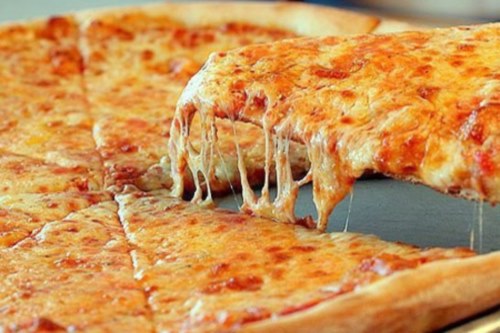We 3D-print so many unheard of things: ears, brains, airplanes, even lunar bases, but what about 3D-printing food that you can actually eat?
NASA has funded a $125,000 grant to mechanical engineer Anjan Contractor at the Systems and Materials Research Corporation in Texas to develop a machine that can “print” tasty and nutritious food, starting with pizza.

A 3D food printer would be able to store digital recipes and combine powders and print food with the structure and texture of real food. By just pressing a button, people could soon have the ability to create their meals in a whole new way. Why is a 3D food printer a good idea?
In just 5 years, NASA plans to send a manned spacecraft on a 501-day mission to Mars and back. The astronauts that will be en route to Mars need to eat. They can’t just keep indulging in thermostabalized fish and fruits — canned foods and flexible pouches filled with meat that just needs to be warmed up.
“The way we are working on it is all the carbs, proteins, and macro and micro nutrients are in powder form. We take moisture out, and in that form it will last maybe 30 years,” Contractor told Quartz.
Not only does this research have the potential to impact the variety of food for space travelers, but it can also impact nutrition by catering to different genders, ages, and health types by programming the printer with the exact nutrition needed in a meal.
Aside from the benefits in space, could a 3D printer potentially be the answer to world hunger?
The idea for the 3D food printer all started when Contractor 3D-printed chocolates for his wife, which led to thoughts about other kinds of 3D printed foods.
Check out the chocolate printer that set this space food plan in motion.
The project details were presented by Contractor at the Humans 2 Mars Summit in Washington earlier this month.
Why start with pizza?
Quite simply, pizza can be printed in layers. First a layer of dough would be printed (and simultaneously baked by the printer’s heated plate). Then, a powdered form of tomato sauce would be mixed with water and oil and placed on top of the dough. Lastly, the printed pizza would be topped with a layer of protein, which can come from an animal or milk source.
The 3D food printer would be able to store digital recipes and combine powders and print food with the structure and texture of real food. Recipes could be recorded and traded as software with instructions for the printer.
The space food printer could be ready as early as the end of the year.
Do you think printed pizza will make an appearance on future space missions? Tell us below.
Story via Quartz.
Advertisement
Learn more about Electronic Products Magazine





